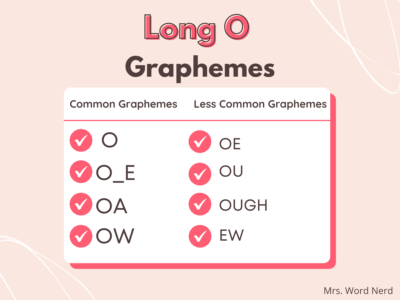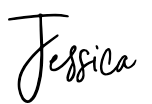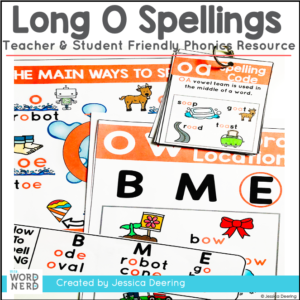Teaching any long vowel and all of its spellings can be challenging. Long O spellings are not without their own tricks and challenges. Many of Long O spellings do have clear guidelines to help you teach students when and how to use them.
Why is Long O Tricky?
Long O has 8 graphemes or spellings that are used to represent it. We can break them down into 4 common spellings and 4 less common spellings. Some of the Long O graphemes are ones that can represent up to 5 different sounds. A few other spellings are also common graphemes of other spellings like ow for the /ow/.

O
Like with most of the other vowels, the most common way to spell Long O is just O. This happens when O is at the end of an open syllable in the beginning, middle or end of a word. For example, let’s break down these words into their syllables: open, robot and zero.
Open is o-pen
Robot is ro-bot
Zero is zer-o
For each of these words O is at the end of a syllable which allows it to say it’s long sound.
O_E
O_E is the next most common grapheme used to represent Long O. It is used at the beginning or middle of a word. It has a consonant sound in the middle of the O and E so O_E will never represent Long O at the end of words. This spelling pattern is used for all vowels which is why this is an easier spelling for students to use and apply to their reading and writing.
OW
OW is used to make the Long O sound at the end of words. There are 2 root words that start with OW: owe and own. OW is also used to make the /ow/ sound. If you focus on OW can be Long O at the end of words that will work.
OA
OA represents Long O in the middle of words. There are a few words that start with OA and one word COCOA that ends with OA, but most words students will be reading and writing will have OA in the middle of words.
OE
OE seems to get a lot more attention for being a Long O spelling than it probably should. It is only used in about 8 root words. It is found at the end of these words. The most common word students will use is toe. This is not a spelling you should spend a lot of time teaching since it is used so little.
OU
OU is traditionally used to represent the /ow/ sound in words. There are a few words that use OU in the middle to represent Long O. These words usually have an L or R in them. Examples would be shoulder, boulder, soul
OUGH
OUGH is one of the trickiest vowel spellings around. It can represent short u, long u, short o, /ow/ and long o. It can get very confusing with this one. It doesn’t represent Long O very much but it does in a couple words students will use: though and although. It is good to point this out, but again no need to spend a lot of time on this spelling for Long O.
EW
EW is only used in one word to represent Long O. Sew. And since so is a word that students will see, read and write being able to know the homophone for it might be important.
Things to Remember:
- You don’t have to teach all graphemes at once.
- Don’t get caught up in the fact many Long O graphemes don’t have clear guidelines.
- Yes there are some expectations for a few of these graphemes but most of the guidelines for each work for the words students will be using the most.
- It is okay to only teach the 4 common graphemes as those are the ones students will be reading and writing the most.
- Practice, practice, practice. Students need much practice reading, decoding and writing words with each type of spelling.
Need More Help
To help me teach Long O spellings, I created these spelling patterns posters and more resource. It includes a poster for each grapheme that breaks down when in a word it is used and how. There are also posters for any rulebreakers that are words students would be using a lot. There are students’ spelling guides for students to reference to remember what grapheme to use and where.
If you want just a little bit of these post to keep with you for reference you can download The Teacher Guide to Long O spellings.
Both of these resources are ones I wished I had when I first started teaching first and second grade. Both help to see that these spellings aren’t so hard and the English language isn’t as tricky as we first make it out to be.
Teach Well,









Leave A Comment